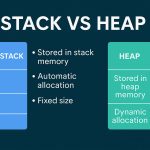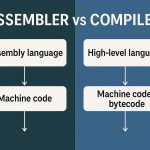Description
A Hypervisor, also known as a Virtual Machine Monitor (VMM), is a critical piece of software, firmware, or hardware that enables the creation and management of virtual machines (VMs). It acts as a virtualization layer that abstracts physical hardware from the operating systems running on that hardware. Hypervisors allow multiple operating systems to share a single physical host, each in its isolated virtual environment.
Hypervisors are essential in cloud computing, data centers, server consolidation, development and testing environments, and more. They offer cost savings, efficient resource utilization, and increased scalability and flexibility.
Types of Hypervisors
Type 1: Bare-Metal Hypervisors
- Run directly on the hardware.
- Offer high performance and efficiency.
- Common in enterprise and production environments.
Examples: VMware ESXi, Microsoft Hyper-V, Xen, KVM
Type 2: Hosted Hypervisors
- Run on top of an existing operating system.
- Easier to set up, suitable for personal or development use.
Examples: Oracle VirtualBox, VMware Workstation, Parallels Desktop
Architecture and Components
1. Host Machine
The physical computer where the hypervisor is installed.
2. Guest Machines (VMs)
The virtual environments running their own OS and applications.
3. Virtual Hardware
Each VM gets virtual CPUs, memory, storage, and network interfaces.
4. Management Console / API
Allows users or scripts to control VMs (start, stop, snapshot, etc.)
How It Works
- The hypervisor intercepts hardware requests from VMs.
- It translates them into actions on physical hardware.
- It allocates resources (CPU time, memory, I/O bandwidth) dynamically.
- Maintains isolation so VMs cannot interfere with each other.
Key Features
- Isolation: Each VM runs independently.
- Resource Allocation: Controlled via hypervisor policies.
- Snapshots: Save VM state for backup or rollback.
- Live Migration: Move running VMs between hosts.
- High Availability: Auto-restarts VMs on healthy hosts if hardware fails.
- Security: Limits attack surface, supports role-based access.
Use Cases
- Cloud Hosting: Providers like AWS, Azure, and Google Cloud use hypervisors to offer virtual servers.
- Server Consolidation: Run multiple services on fewer machines.
- Testing and Development: Test code in different OS environments.
- Disaster Recovery: Backup entire VMs offsite.
- Virtual Desktop Infrastructure (VDI): Remote desktops provisioned from a central server.
Virtualization vs Emulation
| Feature | Virtualization | Emulation |
|---|---|---|
| Speed | Near-native performance | Slower |
| Hardware Usage | Uses host’s real hardware | Emulates hardware in software |
| Use Case | Running multiple OSes on same hardware | Running different architecture systems |
Security Considerations
- Hypervisors can be targeted by hyperjacking (rare, but possible).
- Isolation helps limit the spread of attacks.
- Security features like TPM, Secure Boot, and Intel VT-d bolster defenses.
- Proper access control and network segmentation are critical.
Performance Metrics
- CPU Overhead: Minimal in Type 1; higher in Type 2.
- Memory Ballooning: Dynamically adjusts memory allocation.
- Disk I/O Latency: Depends on virtualization layer and storage backend.
- Network Throughput: Virtual switches and NIC drivers impact performance.
Tools and Platforms
| Platform | Type | Description |
| VMware ESXi | 1 | Enterprise-grade, feature-rich |
| Microsoft Hyper-V | 1 | Integrated with Windows Server |
| Xen Project | 1 | Open-source, used in AWS |
| KVM | 1 | Built into Linux kernel |
| VirtualBox | 2 | Popular for desktop virtualization |
| VMware Workstation | 2 | Developer-friendly, desktop-based |
Example Workflow (Setting Up a VM)
- Install Hypervisor (e.g., VirtualBox)
- Create new VM
- Allocate CPU cores, RAM, disk size
- Mount ISO file (e.g., Ubuntu installer)
- Boot and install OS in the VM
- Install guest additions/tools for better integration
Hypervisor in Cloud Environments
- Multi-tenancy: Different customers run isolated VMs on same host
- Elastic Scaling: Create/destroy VMs based on demand
- Templates & Images: Rapid provisioning from prebuilt configurations
- Infrastructure as Code (IaC): Automate VM deployment
Alternatives: Containers vs Hypervisors
| Feature | Containers (e.g., Docker) | Hypervisors (VMs) |
| OS-Level Virtualization | Yes | No |
| Boot Time | Seconds | Minutes |
| Resource Usage | Lightweight | Heavy |
| Isolation Level | Process-level | Full OS |
| Use Case | Microservices, CI/CD | OS-specific apps, legacy software |
Many modern architectures combine both (e.g., VMs running containers).
Challenges
- VM Sprawl: Unused VMs consuming resources
- License Costs: Proprietary hypervisors may be expensive
- Resource Contention: Poorly managed VMs can hog CPU/memory
- Backup Complexity: Large VMs take time and storage
Best Practices
- Monitor VM performance with tools like vSphere, Proxmox, Zabbix
- Use resource pools to control consumption
- Regularly audit and delete unused VMs
- Automate provisioning with scripts or tools like Terraform/Ansible
- Use version-controlled templates for consistency
Future of Hypervisors
- Bare-Metal Containers: Replacing VMs for some workloads
- Serverless Computing: Functions instead of full OS instances
- Hybrid Cloud Management: Hypervisors that span on-prem and cloud
- AI Optimization: Predictive resource allocation
- Secure Enclaves: Isolation enhanced with hardware security modules
Summary
A hypervisor is a cornerstone technology in modern computing. It allows multiple virtual environments to coexist on a single physical machine, maximizing resource efficiency, enhancing scalability, and enabling flexible deployment. Whether for personal development, enterprise IT, or global cloud infrastructure, hypervisors are foundational to virtualization and cloud-native strategies.
Understanding how hypervisors work, their strengths and limitations, and how to secure and optimize them is essential for IT professionals, system administrators, and developers alike.









